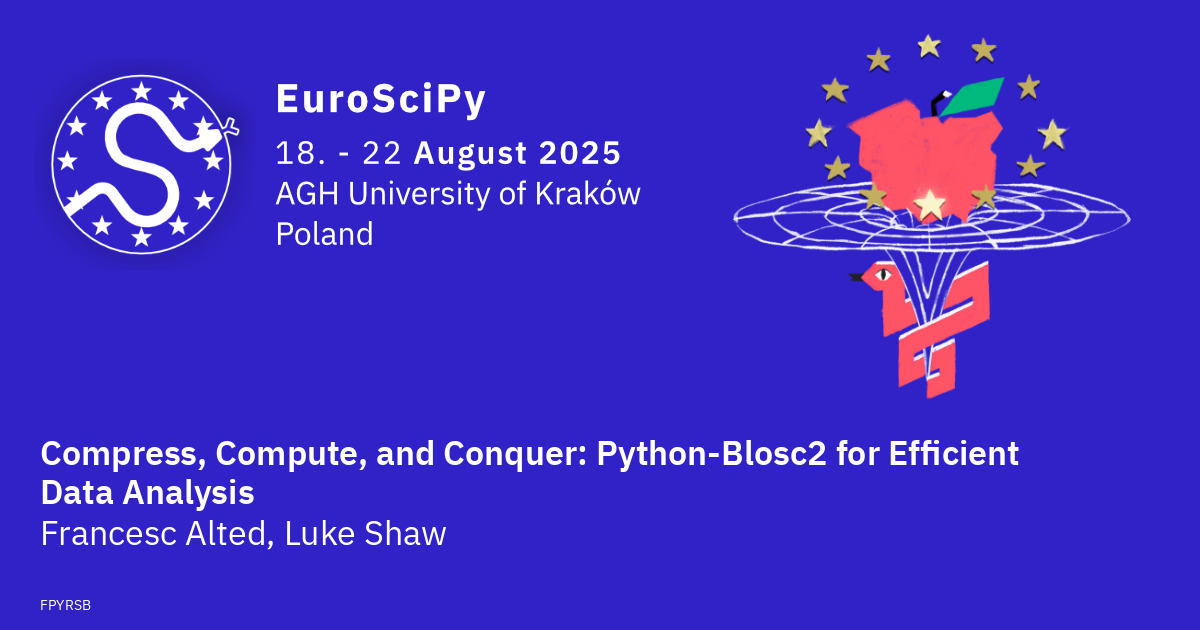Compress, Compute, and Conquer: Python-Blosc2 for Efficient Data Analysis
Francesc Alted, Luke Shaw
Blosc and Blosc2 are well-known and widely used libraries for high-performance data compression. They are particularly effective for compressing large datasets, such as those encountered in data science and high-performance computing. The Blosc library has been around for more than a decade, and its design has always prioritized speed, with a focus on achieving compression and decompression speeds that are close to or even exceed memory bandwidth limits.
With the introduction of a new compute engine in Python-Blosc2 3.0, the guiding principle has evolved to "Compress Better, Compute Bigger." This enhancement enables computations on datasets that are over 100 times larger than the available RAM, all while maintaining high performance.
In this hands-on tutorial, participants will learn how to effectively use Python-Blosc2 through practical exercises divided into three sections:
Section 1: Getting Started with Python-Blosc2 (20 minutes)
- Introduction to compression concepts and Blosc2 architecture
- Setting up your environment and installing Python-Blosc2
- Basic compression/decompression operations with various codecs
- Hands-on: Creating your first compressed arrays
Section 2: The Compute Engine (30 minutes)
- Understanding the Blosc2 compute engine architecture
- Processing data larger than available RAM
- Hands-on: Implementing calculations on out-of-memory datasets
Section 3: Advanced Usage and Remote Access (20 minutes)
- Caterva2: serving Blosc2 files remotely
- Hands-on: Solving a complex data analysis challenge
Throughout the tutorial, we'll work with practical examples demonstrating how to analyze datasets that exceed available RAM without specialized hardware. By the end, participants will have hands-on experience implementing Python-Blosc2 in data workflows and will understand how to compress data while maintaining computational efficiency.
This tutorial will help you expand your capabilities for scientific computing and data analysis while reducing memory footprint and improving processing speed. Attendees should bring laptops with Python installed.
Tutorial setup instructions are accessible at: https://github.com/Blosc/EuroSciPy2025-CCC-Tutorial
